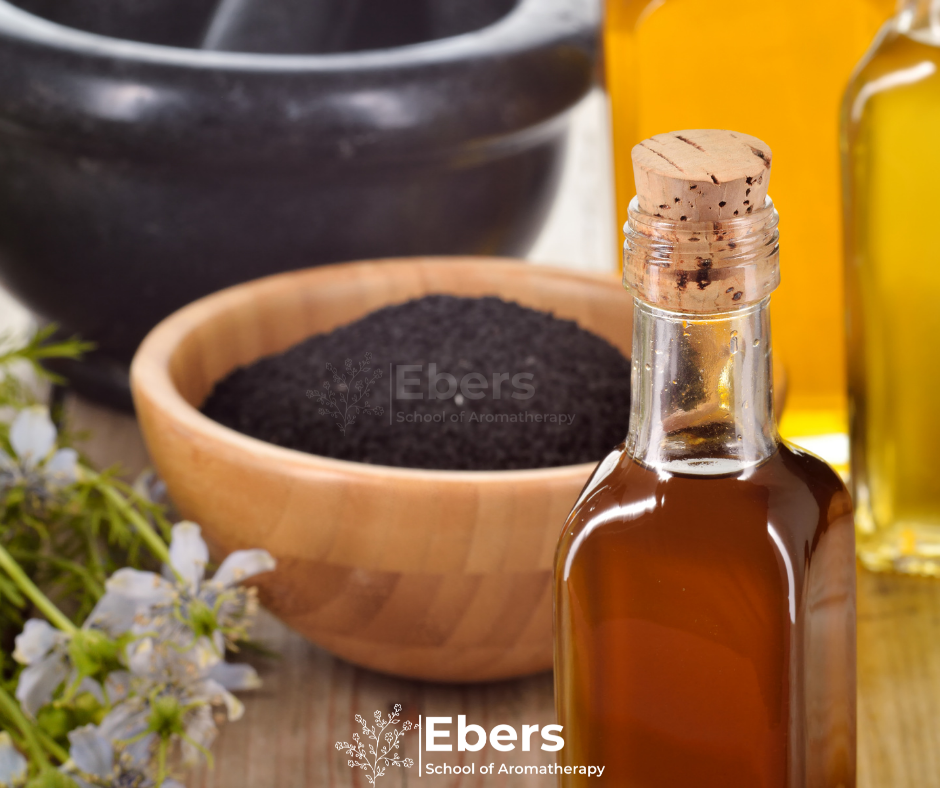Nigella sativa the Blessed seed
- Raghda Maksoud
- Jan 16, 2022
- 4 min read
Updated: Sep 23
Once upon a time, a donkey made history.
Yes, a donkey, in 1922 during Sir Howard carter’s expedition to Egypt, the donkey of the young water boy Hussein Abed El Rasoul hit a step which led to the greatest discovery in the 20th century, unveiling the tomb of the golden king Tutankhamun.

Photo credit: Valley of the king - Ministry of antiquities - Egypt.
I have always loved the history lessons in school, documentaries about ancient Egypt, and the books written by Egyptologists. But since I started my aromatherapy journey I was always searching for botanical history and research.
Nigella sativa - Black seed oil & seeds are stable in the Egyptian and middle eastern cultures, it is used in food, folk medicine, topical applications, soaps, and a lot of skincare products.
The common name and genus name Nigella is derived from the Latin niger, meaning “black.” The term nigellus is a derivative that means “blackish” or “dark.” The species name sativa, meaning “cultivated[1]
Nigella Sativa was mentioned in Howard Carter's diaries and journals, the first excavation season in the tomb of Tutankhamun.[2]
“At the request of Dr. Howard Carter, I undertook the examination of a number of specimens from the tomb of Tut-Ankh-Amen, with a view to their identification botanically. The specimens include samples of seeds, fruits, leaves, and pieces of wood, and it was found that considering the age of the material, the preservation was remarkably good, except for damage to a certain proportion of the seeds and fruits by small beetles, the dead bodies of which were found among some of the samples, it was found in one sample ”
The historical references to these seeds are also found in some of the oldest religious and medical texts. For example, it is referred to as ‘Melanthion’ by Hippocrates and Dioscorides, while the Bible describes it as the ‘curative black cumin’ (Isaiah 28:25, 27 NKJV).
Prophet Muhammad (PBUH) highlighted the amazing benefits of Nigella, he said “The black seed can heal every disease, except death.”
In his book Black cumin (Nigella sativa) seeds, Dr. Mohamed Ramadan [4]
“Nigella sativa seeds have an increasing number of applications in food and pharmaceutical industries. Black cumin is used worldwide in traditional medicine for the treatment of several diseases. It is a key textbook for pharmaceutical and functional food developers as well as R&D managers working in all sectors using plants and vegetable oils.”

Photo credit: Ebers school of Aromatherapy.
The effect of topical application of black seed oil is amazing, many PubMed articles covered researches and analysis of the seeds [5], have two kinds of oil, fixed and essentials,[6] also contain other things such as proteins, alkaloids, and saponins Much of the biological activity of the seeds has been shown due to the presence of thymoquinone , [7]which is the major component of the essential oil but also present in the fixed oil.
For use in cosmetic products, the European Commission Health and Consumers Directorate lists “Nigella Sativa Seed Extract” for perfuming and skin-conditioning functions, and “Nigella Sativa Seed Oil” (fixed oil expressed from the seeds of N. sativa) for emollient, perfuming, and skin-conditioning functions.[8]
Nigella sativa has been used for centuries for the treatment of many skin conditions, for dermatological disorders, and in cosmeceutical formulations:
1-Help with Skin inflammation and skin pigmentation effect. [9]
2-Help Reduce pain associated with knee osteoarthritis [10]
3- Help reduce atopic dermatitis.[11]
In the United States, the Food and Drug Administration (FDA) classifies “black cumin (black caraway), Nigella sativa L.” as Generally Recognized as Safe (GRAS) for use as a spice, natural seasoning, or flavoring. [12]
Hopefully one day, Nigella sativa would be a potential herbal remedy to be assessed under clinical trial for numerous conditions.
Disclaimer: This recipe and information are for educational purposes only. These statements have not been evaluated by the Food and Drug Administration. This product is not intended to diagnose, treat, cure, or prevent any disease.
With love
Raghda
[1] Marzell H. Wörterbuch der deutschen Pflanzennamen. 3. Band. Stuttgart/Wiesbaden, Germany: S. Hirzel Verlag/Franz Steiner Verlag; 1977.
[2] Tutankhamun: Anatomy of an Excavation. Howard Carter's diaries and journals. The first excavation season in the tomb of Tutankhamun. Part 1: October 28 to December 31, 1922, Griffith Institute, Oxford OX1 2LG Concept and direction: Jaromir Malek Transcript: Sue Hutchison Editing: Elizabeth Fleming, Diana Magee, Ana I. Navajas Jimenez, Jaromir Malek Scanning: Hana Navrátilová Image editing: Jenni Navratil
[3] Padhye, Subhash et al. “From here to eternity - the secret of Pharaohs: Therapeutic potential of black cumin seeds and beyond.” Cancer therapy vol. 6,b (2008): 495-510.
[4] Black cumin (Nigella sativa) seeds: Chemistry, Technology, Functionality, and Applications, Mohamed Fawzy Ramadan Springer Nature Switzerland AG 2021- ISSN 2661-8958
[5] https://pubmed.ncbi.nlm.nih.gov/28926201/ EF, Bayomy NA, Abdelaziz EZ. Effect of Topical Application of Black Seed Oil on Imiquimod-Induced Psoriasis-like Lesions in the Thin Skin of Adult Male Albino Rats. Anat Rec (Hoboken). 2018 Jan;301(1):166-174. doi: 10.1002/ar.23690. Epub 2017 Sep 23. PMID: 28926201.
[6] Ahmad A., Husain A., Mujeeb M., et al. A review on therapeutic potential of Nigella sativa: a miracle herb. Asian Pacific Journal of Tropical Biomedicine. 2013;3(5):337–352. doi: 10.1016/S2221-1691(13)60075- [PMC free article] [PubMed] [CrossRef] [Google Scholar]
[7] rah Harzallah H., Kouidhi B., Flamini G., Bakhrouf A., Mahjoub T. Chemical composition, antimicrobial potential against cariogenic bacteria and cytotoxic activity of Tunisian Nigella sativa essential oil and thymoquinone. Food Chemistry. 2011;129(4):1469–1474. doi: 10.1016/j.foodchem.2011.05.117. [CrossRef] [Google Scholar]
[8] Cosmetic Ingredients and Substances (CosIng®) Database. European Commission; 2017. Available at: http://ec.europa.eu/growth/tools-databases/cosing/. Accessed April 16, 2017.
[9] https://www.ncbi.nlm.nih.gov/pmc/articles/PMC5735686/#B7
[10] Chawla, Ruchi, and Amit Chauhan. "Transdermal delivery of Nigella sativa oil for topical application in 1-chloro-2, 4-dinitrobenzene-induced atopic dermatitis in rats." Journal of PharmaSciTech 6 (2016): 51-59.
[11] Chawla, R., & Chauhan, A. (2016). Transdermal delivery of Nigella sativa oil for topical application in 1-chloro-2, 4-dinitrobenzene-induced atopic dermatitis in rats. Journal of PharmaSciTech, 6, 51–59
[12] Food and Drug Administration (FDA). § 182.10 Spices and other natural seasonings and flavorings. Code of Federal Regulations, Title 21 (21 CFR). Washington DC: U.S. Government Printing Office; 2016:474-475.









Comments